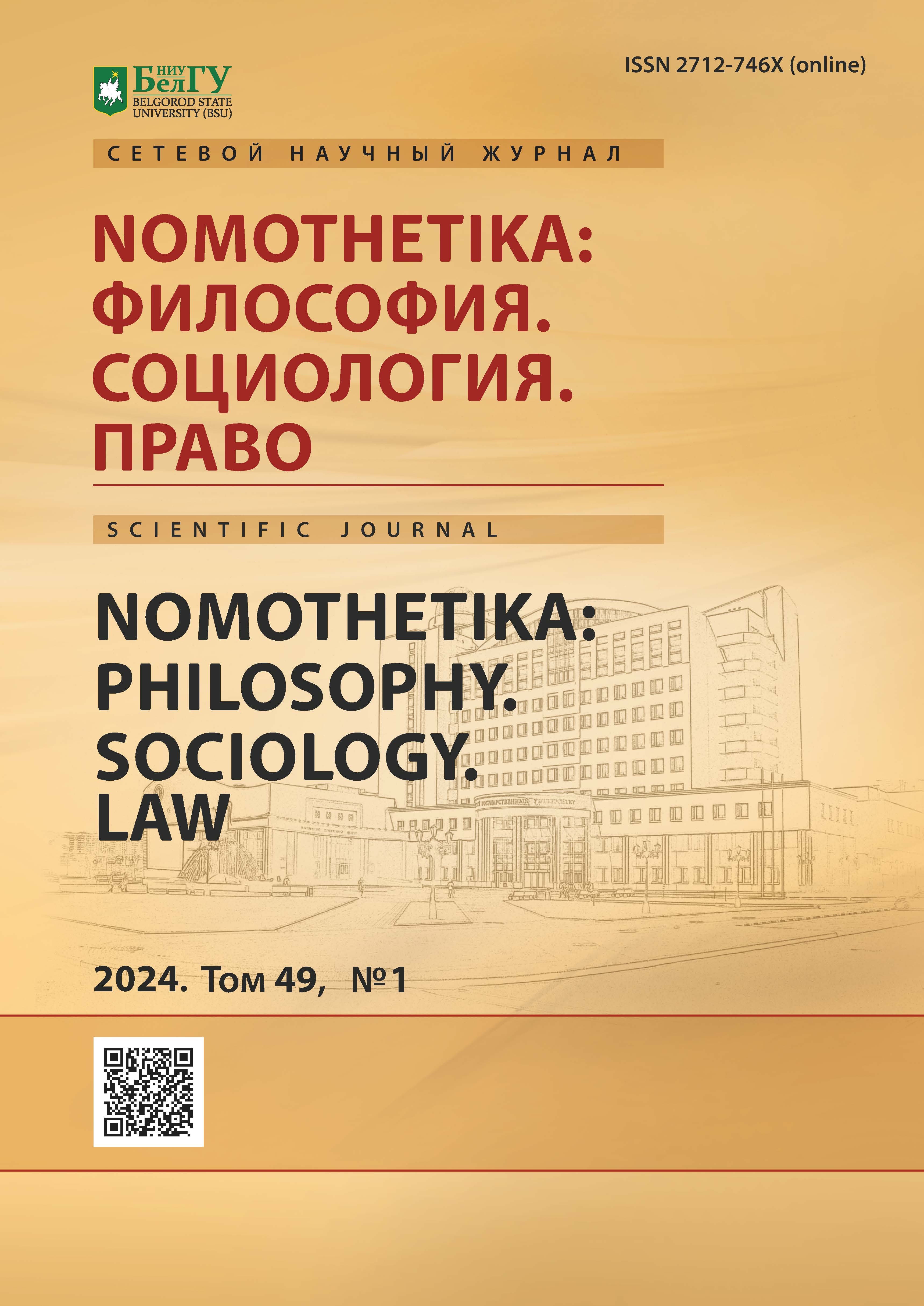Bayesian Experimental Assessment of Social Technologies: Methodological and Methodical Aspects
DOI:
https://doi.org/10.52575/2712-746X-2024-49-1-26-38Keywords:
Bayesian analysis, Bayesian model, experimental method, effect size, effect sizesocial technology, PyMCAbstract
In modern sociology the Bayesian methodology for analyzing sociological data is practically not represented. The basics of applying the Bayesian approach are not taught at Russian sociological faculties, and empirical sociological research is not conducted within the framework of this approach. At the same time, this methodology has significant prospects within the context of experimental sociological research, in particular, when solving the problem of assessing the effectiveness of new social technologies and innovations. The main purpose of this study is demonstrating of the methodological and methodological aspects of the application of the Bayesian approach using modern statistical analysis software, as well as its advantages in comparison with the traditional frequentist approach in the field of experimental assessment of social technologies. The principles of operation of J.K. Kruschke's universal comparative Bayesian model BEST (Bayesian estimation supersedes the t test), reproduced with Python library PyMC, were revealed. The obtained results of the study not only prove the methodological superiority of the Bayesian approach when applied to the assessment of social technologies, but can also be used by other researchers to tune existing or build new comparative Bayesian models, contributing to the popularization of the Bayesian approach in social research.
Downloads
References
Список источников
Сурмин, Ю.П., Туленков Н.В. 2004. Теория социальных технологий : учебное пособие. К., МАУП, 608 с.
Ядов В.А. 2009. Стратегия социологического исследования. Описание, объяснение, понима-ние социальной реальности : учебное пособие. М., Омега-Л, 567 с.
Список литературы
Зангиева И.К., Ротмистров А.Н. 2018. Сравнительный анализ способов проведения факторного анализа на порядковых переменных. Мониторинг общественного мнения: экономические и социальные перемены, 145(3): 29–46. DOI: 10.14515/monitoring.2018.3.02.
Лукашин Ю.П., Рахлина Л.И. 2012. Современные направления статистического анализа взаимосвязей и зависимостей. М., ИМЭМО РАН, 54 с.
Нечаева Е.О. 2014. Социальные технологии: история становления и версии понимания. Вестник РГГУ. Серия «Философия. Социология. Искусствоведение», 126(4): 55–64.
Плотников М.В., Смельцова С.В. 2012. Социальные технологии как объект социологического исследования. В мире научных открытий, 28(4–3): 169–187.
Хей Д.Д. 1987. Введение в методы байесовского статистического вывода. М., Финансы и статистика, 335 с.
Шамионов Р.М., Григорьева М.В. 2019. Методика диагностики компонентов социально-ориентированной активности. Сибирский психологический журнал, 74: 26–41. DOI: 10.17223/17267080/74/2
Щербина В.В., Нечаева Е.О. 2015. Социальные технологии и их применение в сферах социальной практики. Вестник Нижегородского университета им. Н.И. Лобачевского. Серия: Социальные науки, 38(2): 62–67.
Bond T.N., Lang K. 2018. The Sad Truth About Happiness Scales. Journal of Political Economy, 127(4): 1629–1640. DOI: 10.1086/701679.
Cohen J. 1988. Statistical power analysis for the behavioral sciences. New York, Lawrence Erlbaum Associates, 567 p.
Cumming G. 2008. Replication and p intervals: p values predict the future only vaguely, but confidence intervals do much better. Perspectives on Psychological Science, 3(4): 286–300. DOI: 10.1111/j.1745-6924.2008.00079.x.
Cowell F.A., Flachaire E. 2017. Inequality with Ordinal Data. Economica, 334(84): 290–321. DOI: 10.1111/ecca.12232.
Knapp T.R. 1990. Treating Ordinal Scales as Interval Scales. Nursing Research, 39(2): 121–123. DOI: 10.1097/00006199-199003000-00019.
Kruschke J.K. 2010. Bayesian data analysis. Wiley Interdisciplinary Reviews: Cognitive Science, 1: 658–676. DOI: 10.1002/wcs.72.
Kruschke J.K. 2013. Bayesian estimation supersedes the t test. Journal of Experimental Psychology, 142(2): 573–603. DOI: 10.1037/a0029146.
Lemoine N.P. 2019. Moving beyond noninformative priors: why and how to chooseweakly informative priors in Bayesian analyses. Oikos, 128(7): 912–928. DOI: 10.1111/oik.05985.
Lynch S.M., Bartlett B. 2019. Bayesian Statistics in Sociology: Past, Present, and Future. Annual Review of Sociology, 45(1): 47–68. DOI: 10.1146/annurev-soc-073018-022457.
Sawilowsky S. 2009. New effect size rules of thumb. Journal of Modern Applied Statistical Methods, 8(2): 467–474. DOI: 10.22237/jmasm/1257035100.
Sunnåker M., Busetto A.G., Numminen E., Corander J., Foll M., Dessimoz C. 2013. Approximate Bayesian Computation. PLoS Computational Biology, 9(1): 1–10. DOI: 10.1371/journal.pcbi.1002803.
Vallverdú J. 2015. Bayesians versus frequentists: a philosophical debate on statistical reasoning. Heidelberg, Dordrecht, London, New York, Springer, 110 p.
Williamson J. 2010. In Defence of Objective Bayesianism. New York, Oxford University Press, 191 p.
Abstract views: 268
Share
Published
How to Cite
Issue
Section
Copyright (c) 2024 NOMOTHETIKA: Philosophy. Sociology. Law

This work is licensed under a Creative Commons Attribution 4.0 International License.


